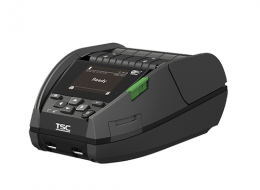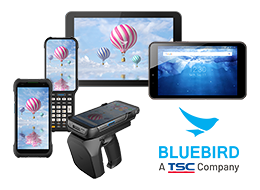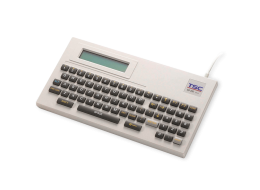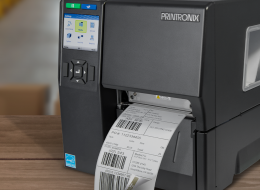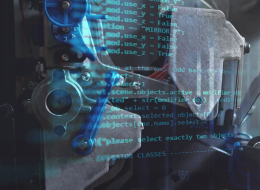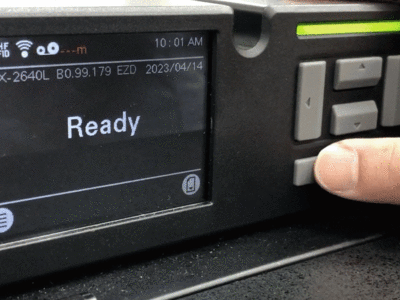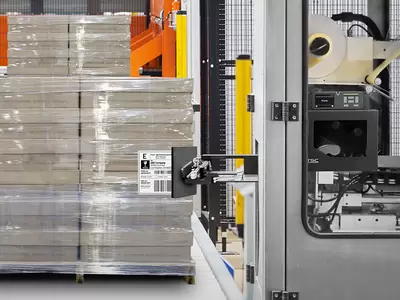How a Print Engine with an Adjustable Peel-Off Module Delivers Easy Print and Apply Integration

Print-and-apply systems are often adopted in production facilities to eliminate manual and legacy processes to increase throughput and reduce expenses. This process automatically creates and applies labels to products, packaging, pallets, and more. Labels are applied onto the item’s surface using various methods such as blow, tamp, tamp and blow, and wipe,1 depending on the labeling requirements. With each labeling method, labels need to be peeled off at different angles to feed to a tamp pad, swing arm, or wipe-on brush applicator.
What Does a Print Engine Peel-Off Module Do?
A peel-off module is a metal bar at the feed-out of the print engine that separates the label from the liner during printing and presents the peeled label, efficiently retrieving the label and applying it. The angle of the printed label distributed at feed-out will depend upon the angle of the peel-off bar. Usually, the peel-off angle on the print engine is fixed, and the angle may even differ depending on the printer brand. It is a small, yet impactful component in the print engine that can benefit the print and apply system. However, it can also cause headaches for integrators, especially when it is not at the right angle for application.
What Limitations Do Fixed Peel-Off Angles Have?
With a fixed peel-off, integrators have to find ways to correct the peel-off angle to grab the label. System builders often tilt the print engine and mount it in different orientations for the label applicator. When this isn’t an option, integrators will design methods to adjust the angle, such as using an additional peel-off plate extended from the print engine to feed out the label, adopting an expensive robotic arm to retrieve and apply the label, or adjusting the parameters of the applicator and/or the robotic arm. All of these approaches result in more time spent correcting the angle, an additional investment in hardware and software engineering, and a higher cost to build a Print-and-apply system.
Major Benefits of a Print Engine With Adjustable Peel-Off
The two major benefits of the adjustable peel-off module are easy integration and high compatibility. The whole print engine can be adjusted to meet application requirements, greatly reducing integration time and effort while speeding up time-to-market. When there is an applicator, the label can feed out to meet the angle of the applicator or the robotic arm with less effort than adjusting the applicator or the arm. Even better, particularly when you have a budget constraint, the peel-off angle can adjust to the labeling requirements and directly swipe onto the item with only a roller or brush, removing the investment cost of a robotic arm.
Also, when replacing a print engine, the peel-off module can be adjusted to the exact same angle as the current print engine, saving time and effort on readjustments for a seamless transition to the PEX-2000 Print Engine. As a result, the adjustable peel-off module makes integration with the applicator and replacement of the current print engines easy, ensuring quick serviceability in fast-paced production environments.
How The PEX-2000 Print Engine Can Help
Our PEX-2000 Series Print Engine features the industry’s first angle-adjustable peel-off module. The innovative peel-off module allows it to function in angles ranging from -18° to -3° with a 15° adjustment for easy peel-off, eliminating the need to reinvent or redesign peelers or application arms. The default peel-off angle is set to -18° like other prominent print engines on the market so systems integrators can easily migrate and replace when applying the PEX-2000 to their existing label applicators.
To adjust the peel-off bar angle from -3° to -18°, simply loosen both screws, adjust to the desired angle, and then tighten the screws. It’s that simple to adapt the peel-off module to meet the demands of your Print-and-apply system. Our PEX-2000 adjustable module is mechanically designed to easily adjust the angle but will not offset, maintaining stability paired with flexibility. The screws on the peel-off module are designed to grip the peel-off angle, making it stable even while printing.
Would you like to learn more about how the new 6-inch PEX-2000 Series Print Engine can optimize your Print-and-apply system? Then explore the PEX-2000 on the TSC website or contact your local sales representative.
1What is print and apply labelling?, https://www.domino-printing.com/en/blog/2018/what-is-print-and-apply-labelling, DOMINO

